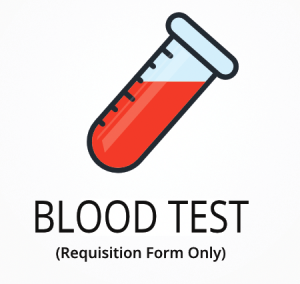Ordering the Bacterial Organic Acids Test (MOAT) by Great Plains Labs
The Bacterial Organic Acids Test (MOAT) by Great Plains Labs helps identify imbalances in gut bacteria and yeast by measuring specific organic acids in urine. This test can reveal hidden patterns of microbial overgrowth, which may contribute to symptoms like digestive discomfort, mood changes, and trouble focusing. Interestingly, certain organic acids measured in this test can also indicate how well your body is detoxifying environmental chemicals.
Ordering this test can provide clear answers about gut-related symptoms and help guide targeted nutrition or supplement plans. When you order the Bacterial Organic Acids Test (MOAT), you can expect these specific benefits:
- Pinpoints markers for yeast and bacterial overgrowth, including Candida and Clostridia species
- Detects imbalances that may affect nutrient absorption and energy production
- Highlights possible links between gut health and mood or behavior changes
- Supports targeted treatment plans for digestive issues and chronic symptoms
- Monitors the effectiveness of dietary or supplement interventions over time
Who Should Consider Microbial Organic Acids Testing
People who experience ongoing bloating, brain fog, or mood swings may benefit from this test, especially if they have tried dietary changes without improvement. For example, a parent noticing their child’s sudden changes in focus and behavior after antibiotic use may find this test helpful in uncovering hidden gut imbalances.
Ordering this test may also be useful in these situations:
- Persistent fatigue that does not improve with rest
- Unexplained skin problems such as rashes or eczema
- Frequent digestive complaints like gas, bloating, or loose stools
- Difficulty managing weight despite healthy eating habits
- Unexpected food sensitivities that develop after travel or illness
Testing for these organic acids can help identify the root cause of symptoms by measuring specific markers linked to gut bacteria and yeast. Delaying this test may allow imbalances to continue, making it harder to address symptoms and track progress with treatment.
Preparing for Gut Microbial Metabolite Analysis
Fasting is not required for this test, but it is best to collect the urine sample first thing in the morning for the most consistent results. Make sure to carefully follow any instructions provided by your doctor or healthcare practitioner to ensure the sample is collected and shipped correctly.
Labs Included When Ordering Your Bacterial Organic Acids Test (MOAT)
| Test Name | Reference Range | What It Means | Low and High Levels of Bacterial Organic Acids Test (MOAT) |
|---|---|---|---|
| Citramalic | 0–4 | Citramalic is a byproduct of certain yeast and bacteria. High levels may point to yeast overgrowth or gut flora imbalance. | High levels mean possible yeast or bacterial overgrowth.
Low levels mean normal or low yeast/bacterial activity. |
| 5-Hydroxymethyl-2-Furoic | 0–2 | This marker is linked to gut bacteria breaking down certain sugars. It can reflect changes in gut microbial activity. | High levels mean increased bacterial fermentation.
Low levels mean typical or reduced bacterial activity. |
| 3-Oxoglutaric | 0–7 | 3-Oxoglutaric acid is produced by certain bacteria and can be elevated in gut dysbiosis or yeast overgrowth. | High levels mean possible yeast or bacterial imbalance.
Low levels mean balanced gut flora. |
| Furan-2 | 0–2 | Furan-2 is a breakdown product from gut bacteria. It can indicate changes in the gut environment. | High levels mean increased bacterial metabolism.
Low levels mean normal bacterial activity. |
| 5-Dicarboxylic | 0–3 | This acid is produced by gut bacteria and can be a sign of altered microbial balance when elevated. | High levels mean possible gut dysbiosis.
Low levels mean typical gut bacteria activity. |
| Furancarbonylglycine | 0–2 | Furancarbonylglycine is a marker for certain bacterial metabolism. It can reflect changes in gut flora composition. | High levels mean increased bacterial fermentation.
Low levels mean balanced gut bacteria. |
| Tartaric | 0–3 | Tartaric acid is a byproduct of yeast, especially Candida. It is often elevated in yeast overgrowth. | High levels mean possible Candida or yeast overgrowth.
Low levels mean normal yeast activity. |
| Arabinose | 0–29 | Arabinose is a sugar alcohol produced by yeast. High levels are a strong indicator of Candida overgrowth. | High levels mean likely Candida overgrowth.
Low levels mean no significant yeast activity. |
| Carboxycitric | 0–3 | Carboxycitric acid is linked to yeast and mold metabolism. It can be elevated in fungal overgrowth. | High levels mean possible fungal or yeast imbalance.
Low levels mean normal fungal activity. |
| Tricarballylic | 0–2 | Tricarballylic acid is a marker for mold exposure and can also be produced by gut bacteria. | High levels mean possible mold exposure or gut imbalance.
Low levels mean no significant mold or bacterial activity. |
| 2-Hydroxyphenylacetic | 0–5 | This acid is produced by gut bacteria breaking down proteins. It can reflect changes in gut flora or protein digestion. | High levels mean increased bacterial protein breakdown.
Low levels mean typical protein digestion. |
| 4-Hydroxyphenylacetic | 0–5 | This marker is linked to the breakdown of certain amino acids by gut bacteria. It can be elevated in gut dysbiosis. | High levels mean possible bacterial imbalance.
Low levels mean balanced gut flora. |
| 4-Hydroxybenzoic | 0–3 | 4-Hydroxybenzoic acid is a breakdown product of plant foods and gut bacteria. It can reflect changes in diet or gut flora. | High levels mean increased plant food intake or bacterial activity.
Low levels mean typical levels for diet and bacteria. |
| 4-Hydroxyhippuric | 0–3 | This acid is produced by gut bacteria and can be influenced by diet and microbial balance. | High levels mean increased bacterial metabolism.
Low levels mean normal gut flora activity. |
| HPHPA (Clostridia marker) | 0–1 | HPHPA is a specific marker for Clostridia bacteria. High levels are linked to behavioral and neurological symptoms. | High levels mean possible Clostridia overgrowth.
Low levels mean no significant Clostridia activity. |
| 4-Cresol | 0–2 | 4-Cresol is produced by certain bacteria and can be elevated in gut dysbiosis or after antibiotic use. | High levels mean possible bacterial imbalance or recent antibiotic use.
Low levels mean balanced gut bacteria. |
| DHPPA (beneficial bacteria) | 0–3 | DHPPA is a marker for beneficial bacteria. It can reflect the presence of healthy gut flora. | High levels mean strong beneficial bacteria activity.
Low levels mean reduced beneficial bacteria. |
| Hippuric | 0–150 | Hippuric acid is produced from the breakdown of dietary components by gut bacteria. It can reflect both diet and microbial balance. | High levels mean increased intake of certain foods or bacterial activity.
Low levels mean low intake or reduced bacterial metabolism. |
| 3-Indoleacetic | 0–10 | 3-Indoleacetic acid is a breakdown product of tryptophan by gut bacteria. It can be elevated in gut dysbiosis. | High levels mean increased bacterial tryptophan breakdown.
Low levels mean typical tryptophan metabolism. |
| 3-Hydroxy-3-methylglutaric | 0–2 | This acid is linked to mitochondrial function and can be elevated in metabolic or mitochondrial disorders. | High levels mean possible mitochondrial dysfunction.
Low levels mean typical mitochondrial activity. |
| 2-Hydroxyhippuric | 0–3 | 2-Hydroxyhippuric acid is a byproduct of gut bacteria and can reflect changes in microbial balance. | High levels mean increased bacterial metabolism.
Low levels mean balanced gut flora. |
| Creatinine | 0.5–2.0 | Creatinine is used to standardize urine concentration for accurate comparison of other markers. It is not a direct marker of gut health. | High levels mean concentrated urine.
Low levels mean diluted urine. |
Reference ranges may change slightly as labs update their methods and data. Always check your report for the most current values.
Bacterial Organic Acids Test (MOAT) FAQ
Is there Bacterial Organic Acids Test (MOAT) testing near me?
This is a home test kit that you can collect locally and send to the lab, so you do not need to visit a draw site; check the draw location link at the top of the page. For those dealing with ongoing digestive issues or brain fog, having a convenient collection option helps you get answers without extra travel or waiting.
How do I interpret the test results?
While your treating physician should review your results, you can also use our one-on-one test results review service with our clinical team for a detailed explanation and next steps.
What is the cost of the test?
The price listed for this test includes standard shipping to you and return shipping to the lab; draw fees may apply if a blood sample is needed. Ordering this test can help you address gut-related symptoms more quickly by pinpointing the source of your discomfort.
How often should I retest?
Retesting is usually recommended every 3 to 6 months, especially if you are making changes to your diet or treatment plan. Regular testing helps track progress and ensures that any adjustments are working as expected.
How accurate is the test?
This test uses gas chromatography-mass spectrometry (GC-MS) to measure organic acids, with a specificity of 98% and sensitivity of 97%. TrueHealthLabs.com partners with CLIA-certified and CAP-certified laboratories to uphold rigorous testing standards for dependable results.
Important Notes
- This test can not be collected or mailed from New York State. Contact us with questions.
Medical Review Board
Reviewed by Jeff Donohue M.D. from Body Logic and Brady Hurst DC, CCCN. Written by True Health Lab’s team of editorial health contributors.
Disclaimer: This information is for educational purposes only and not intended as medical advice. Consult your healthcare provider for personalized guidance.
Why Customers Trust True Health Labs - What People are saying
Also rated 4.6 out of 5 based on 3452 ShopperApproved reviews- See all TrueHealthLabs.com reviews.








